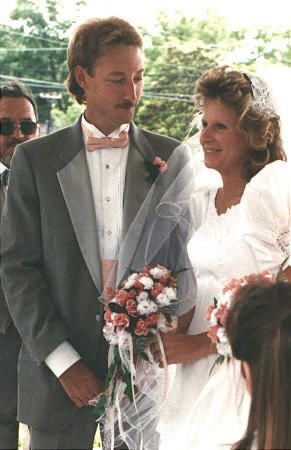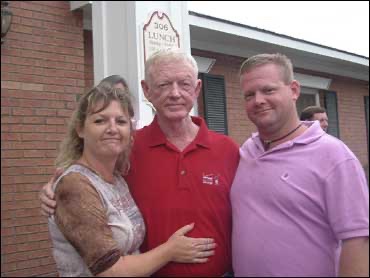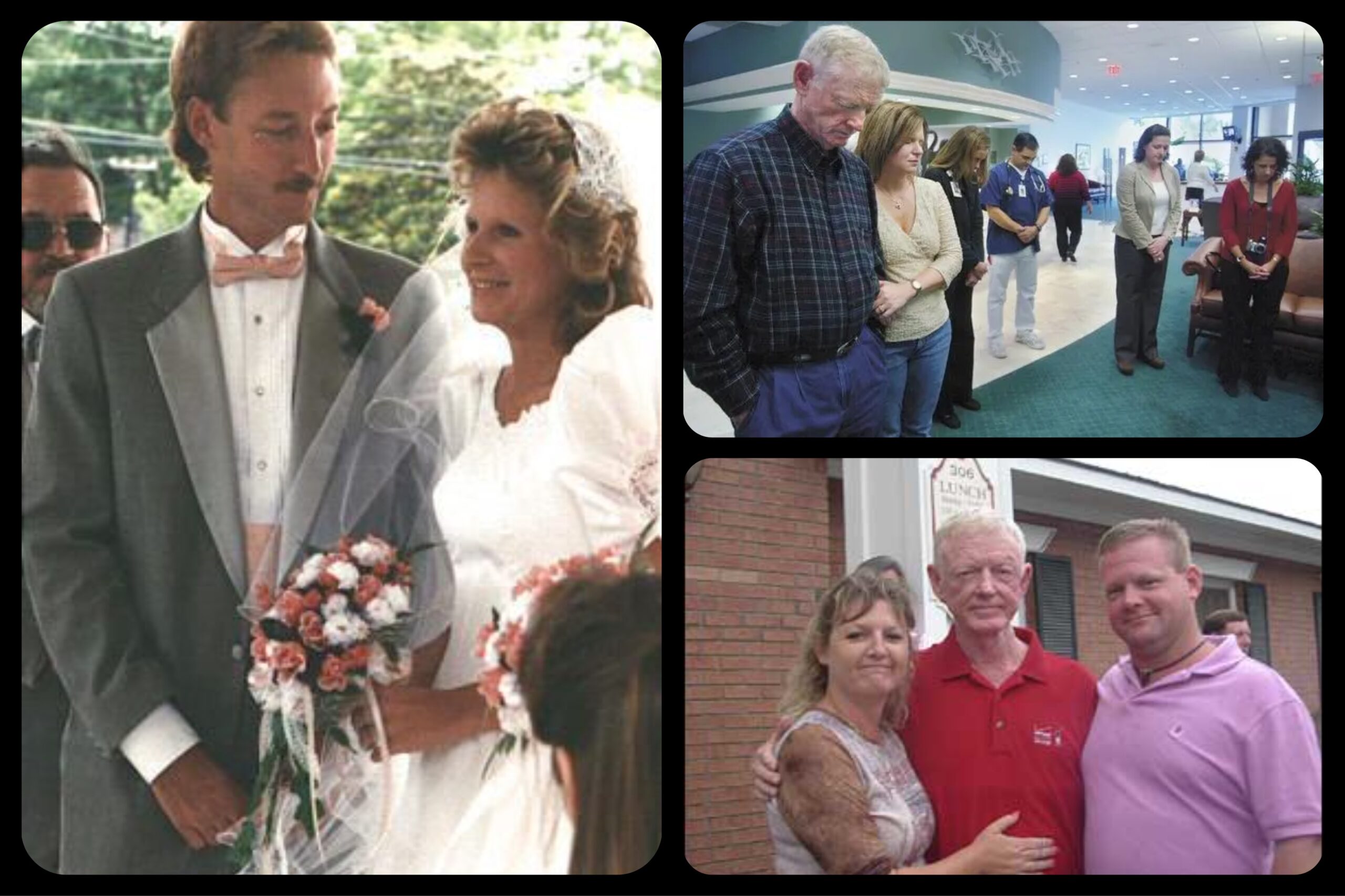One cloudy spring morning in southeastern Georgia, Sonny Graham sipped on a cup of coffee before embarking on another day in the family landscaping business, which also involved taking his 9-year-old stepson to the dentist. However, Graham deviated from his routine and made his way to the backyard shed he had constructed.
Inside the shed, the 69-year-old picked up the 12-gauge Remington shotgun that had accompanied him on countless quail- and dove-hunting expeditions. He aimed the barrel at the right side of his throat and, on that April Fool’s Day, pulled the trigger.
This somber act unfolded almost precisely 13 years after another man’s su*cide had granted Graham a second chance at life. That man was Terry Cottle, and his decision to end his own life resulted in Graham receiving his heart through transplantation.

However, the connection between Graham and the 33-year-old donor ran deeper than just the organ transplant. Almost ten years following the successful transplant, Graham married the young widow of Terry Cottle, forging a unique bond between them.
Now, with Graham’s passing, he had once again made her a widow. As news of his death circulated, the internet buzzed with the story of a heart that had been stilled by su*cide not once but twice, and the woman who had experienced the loss of the same heart twice. Reporters and bloggers delved into discussions about the concept of “cellular memory” and pondered whether the organ might somehow carry a “su*cide gene.”
Cottle’s sister dismissed the notion. In her view, the conscience, love, and loss all resided within the brain, and the heart was nothing more than a biological pump. She believed that Graham’s passing had more to do with Cheryl, the woman whom both men had decided to welcome into their lives, symbolized by the shared heart.
Back in 1988, Terry Cottle resided with his wife and their two young daughters in a subsidized apartment complex they were responsible for managing in Jasper County, South Carolina. Cottle’s employer had a daughter, a petite and striking woman with auburn hair and hazel eyes.
Cheryl Sweat had recently obtained an annulment for her three-year marriage, citing her husband’s existing marriage as the reason. It was her former husband who eventually contacted Cottle’s wife, conveying, “I simply want you to be aware that your husband is involved with my wife.”
Terry Cottle initiated divorce proceedings, and a mere nine days after it was finalized in May 1989, he and Cheryl tied the knot. Initially, their life together appeared idyllic. Terry embraced his role as a stepfather, formally adopting Cheryl’s two sons, Christopher and Timmy. In addition, the couple welcomed a daughter, Jessica, into their family. Cottle continued working while his new wife pursued a nursing degree.
Towards the end of 1994, the couple upgraded from their single-wide trailer to a new doublewide residence in Moncks Corner, South Carolina. Around the Christmas season, Cheryl’s widowed mother moved in with them.

Terry had discontinued his high school education but later obtained an equivalency diploma. He worked diligently despite his limited opportunities, even acquiring a real estate license and, at the age of 33, becoming a certified emergency medical technician.
However, it often seemed that his achievements were insufficient. Terry maintained secret conversations with his ex-wife, having her contact him through the 800-number at the exterminating company where he was employed, all to avoid Cheryl discovering the communication.
On one fateful night in 1995, he implored, “Talk to me,” revealing that he had a gun pointed at his head.
Within a month of his mother-in-law moving in, Terry had left the trailer and taken up residence with his sister, Tammy Erickson. Yet, it wasn’t long before Cheryl began to visit, preparing meals for the family and spending nights in Terry’s room.
On March 15, the couple engaged in a heated argument. During the exchange, Cheryl informed Terry that she could not remain married to a man whose income was lower than hers. At some point, her son Timmy vividly recalls that she removed her wedding ring and hurled it over the fence.
By the following morning, they had reached an agreement that Cottle should leave.
As he prepared to depart, Cottle entered the bathroom, where a gunshot was heard.
Initially, Cheryl informed the sheriff’s investigators that she heard her 10-year-old son, Christopher, shouting that Cottle had shot himself. She stated that she rushed into the bathroom and discovered him on the floor with the revolver still in his grasp.
In an alternative account documented in a coroner’s report, Cheryl recounted that she was having oatmeal when one of her sons urgently exclaimed, “Mom, Dad has a gun!” She mentioned that she rushed towards the bathroom and found Terry standing upright, holding the gun.
According to the report, Cheryl explained that she yelled something along the lines of “Terry, wait!” and simultaneously tried to push the bathroom door open. It was at that moment she heard a gunshot.
In her recollection, Terry gasped, “Baby, help me, help me. I’m dying.”
The 22-caliber bullet entered Cottle’s skull just behind his right ear, with no exit wound.
On March 20, following four days in the trauma unit at the Medical University of South Carolina in Charleston, Cheryl, influenced by her father-in-law’s counsel, consented to the withdrawal of life support for Terry and agreed to donate his organs.
Approximately 60 miles to the southwest, 57-year-old Sonny Graham received the long-awaited call he had been anticipating for over a year.
Remus T. “Sonny” Graham was a prominent figure on Hilton Head Island. Having served as the dedicated manager of the central plant for Hargray Communications, the island’s telephone service provider, he was acquainted with nearly everyone. His renowned Brunswick stew became a regular feature at charity fundraisers and community gatherings. To honor his contributions, the local high school football field was even named after him.
A native of Lyons, Georgia, located near Vidalia in the heart of sweet onion country, Graham was a fixture at the Heritage Golf Tournament hosted at the Sea Pines Resort on the island. Even after retiring from Hargray, he continued to return each year as a volunteer, managing the communications trailer for the tournament.
The red-haired Air Force veteran was a passionate hunter and fisherman, described by his friend Bill Carson as a “man’s man.” Simultaneously, he embodied the essence of a devoted family man. With more than three decades of marriage, Sonny and Elaine had raised two children, Gray and Michelle.

However, in 1994, Graham contracted a virus that inflicted severe damage to his heart muscle. By early 1995, the robust outdoorsman, once capable of wrestling fighting salmon from rushing Alaskan streams, struggled just to rise from a chair. His name was placed on transplant waiting lists.
Around 5 p.m. on March 20, Graham received the life-changing news that a suitable heart had become available. Remarkably, it turned out that Terry Cottle’s heart was as close to a perfect match as they come.
Within just six months of the transplant, Graham had recuperated sufficiently to embark on a fishing expedition to Alaska with Carson. He lightheartedly remarked that having the heart of a 33-year-old had worked wonders for his libido.
When a doctor suggested he consider counseling for any potential feelings of guilt, Graham declined, stating, “I’m sorry the other guy passed away, but this heart is mine now.”
However, friends began noticing subtle alterations in his preferences—a newfound fondness for beer, a taste for hot dogs (which happened to be one of Cottle’s favorite foods). Pastor John Keller detected an overall restlessness, as if Graham were actively exploring new paths in life.
In November 1996, Graham reached out to the South Carolina Organ Procurement Agency, requesting them to forward a letter to the donor’s family. Although his children cautioned against it, he was determined to personally express his gratitude to Cottle’s wife.
After this exchange of letters and some photographs, Cheryl Cottle reached out and called Graham.
In January 1997, Graham and his wife arranged to meet Cheryl for dinner at a charming waterfront restaurant in Charleston. During the evening, Graham found himself captivated by the 30-year-old widow.
“I fell in love with Cheryl the first time we met,” he would later admit in a letter.
However, it appeared that the sentiment was not initially reciprocated—at least, not right away.
That April, Cheryl went on to marry her third husband, George Watkins. Surprisingly, Elaine and Sonny Graham attended the wedding, with Sonny stepping in for Cheryl’s late father to give her away as the bride.
Cheryl gave birth to a son with Watkins in January 1999. Around the same time, Elaine Graham became aware that her husband’s connection with the younger woman was more than just paternal.
In a heartfelt letter, Graham offered a sincere apology to his wife for being “the S.O.B. you said I was” and for dismantling “a relationship that we had for 40 plus years.”
He reflected, “I allowed someone to come between you and me, which should never have occurred. Looking back, I see where I sacrificed love and companionship for attention and affection… It would be wonderful if I could rewind the past four years of our lives.”
Subsequently, both couples separated, and after a judge formally dissolved the Grahams’ 38-year marriage in October 2001, Cheryl and Graham moved into a mobile home on land he had purchased in his hometown while constructing a house tailored to her preferences.
Unfortunately, the domestic harmony proved short-lived. In May 2002, Cheryl departed, leading Graham to file a lawsuit against her, alleging that she had failed to repay certain loans and return a diamond ring. In turn, Cheryl asserted in a counterclaim that when she conveyed her decision that their relationship wasn’t viable, Graham “became increasingly possessive” and issued threats.
Amid the ongoing legal battle, Cheryl entered into another marriage. Husband No. 4 was John B. Johnson, Jr., a corrections officer employed at the Georgia prison where Cheryl had been working as a contract nurse.
However, within a year, this marriage also began to disintegrate. On Thanksgiving in 2003, sheriff’s deputies were summoned to their residence, as both husband and wife leveled allegations of domestic abuse against each other.
During a reconciliation attempt around the holiday season, Johnson recounts a disturbing incident. One night, while they were in bed, Cheryl broached the topic of su*cide. When she didn’t return from a trip to the bathroom, Johnson went to check and claims he found her clutching his .22 caliber revolver.
As they grappled for control of the weapon, Johnson asserts that the children and Cheryl’s mother hurried into the room. According to Johnson, Cheryl told them that HE had retrieved the gun and was threatening to harm himself.
Subsequently, the couple separated, and by the time their divorce was finalized in August 2004, Johnson asserts that Cheryl was already wearing Graham’s ring.
On December 8, 2004, they exchanged vows at the Almost Heaven Resort in Gatlinburg, Tennessee. Graham initiated a landscaping business and even employed Cheryl’s two eldest sons.
A few days before their second wedding anniversary, the couple participated in an event on Hilton Head dedicated to honoring the families of organ donors. The Island Packet featured a story with the headline, “A love story unlike any told…”
Cheryl shared with the newspaper, “It’s true what it says in the Bible: If you live God’s will and give with a happy heart, you will reap the rewards.”
Graham expressed that he had “placed my life in God’s hands,” and Cheryl was the answer to his prayers.
Right up until his passing, Graham remained engaged in making plans for the future. He had invited friends for fishing trips and was discussing the upcoming golf tournament.
Unbeknownst to anyone, Graham had prepared a last will and testament.
During the last week of February, Larry Lockley, his nephew, went fishing with Graham. After their fishing trip, Graham revealed the will to Lockley and inquired if he would be willing to serve as the alternate executor.
Concerned, Lockley inquired, “Is there anything wrong?”
Graham assured him, saying, “There’s nothing wrong at all.” However, he added, “You never know.”
He provided Lockley with a copy of the will and discreetly stashed another in a briefcase located on a shelf at the rear of the utility shed.
On March 20, which marked the anniversary of his heart transplant, Graham playfully left a message on his former pastor’s answering machine, saying, “Do you remember where you were 13 years ago on this day?” When Pastor Keller returned the call, Graham assured him that he and his transplanted heart were in excellent condition.
That week, Carson traveled to Lyons to engage in bream and bass fishing with his longtime friend. Graham didn’t openly express dissatisfaction with his marriage, which was unusual for him, but something appeared to be amiss.
Carson noted, “He just wasn’t the happy-go-lucky guy I’d known all my life.”
A few days later, Graham’s borrowed heart ceased beating forever.
In late April, shortly following Graham’s passing, Cheryl met with Tomme Hilton, an old friend, and over drinks, she lamented that Graham had “not left her a penny.”
Evidently, Graham had depleted his retirement savings and accumulated substantial debts, roughly three times the value of his assets, while striving to, as he once expressed it, “maintain (Cheryl) in the lifestyle she desires.” His financial affairs were in such disarray that both individuals designated as his executors, including Lockley, declined the role.
Lockley remarked, “I always believed my uncle was in pretty sound financial standing. Discovering the dire state of his finances was a complete shock to me.”
Cheryl Graham did not provide any responses to repeated requests for comments. However, acquaintances observed that her behavior did not align with that of a mourning widow.
On her now-deactivated MySpace account, her photograph transitioned from a sweetly smiling portrait to images of her on a lake or enjoying beer with friends. Her screen name underwent alterations as well, changing from “Cheryl” to “PrEttY LAdy” and then to “BeaUtiFuL MeSs.”
Family members who monitored her account noticed that shortly after Graham’s passing, she uploaded a man’s photograph, labeling him as her “new boyfriend.” Furthermore, a flirtatious message on the man’s webpage, originating from her account, was dated March 26—merely six days prior to Graham’s demise.
The man confirmed to The Associated Press that agents from the Georgia Bureau of Investigation had conducted interviews with him and made it clear that he no longer maintains contact with Cheryl.
Even though the Toombs County coroner classified Graham’s death as a su*cide in late May, the GBI has yet to officially close the case.
Investigators have also interviewed the surviving former husbands of Cheryl Graham. Johnson wasn’t the only one with a story related to firearms. In 2005, during a custody dispute over their grandchildren, Cheryl allegedly called her first husband, Isaac “Bo” Carter, at his North Carolina residence and threatened to “blow my brains out w/her 38 pistol …” A protective order was subsequently issued.
Husband No. 4, Johnson, warns that anyone who becomes involved with his ex-wife should brace themselves for an emotional roller coaster ride.
Johnson candidly shared with the AP, “One day she hates you and one day she loves you, and the next day she hates you. I suppose I’m fortunate to still be alive.”
After living with a borrowed heart for 13 years, it seems that Graham’s perspective had shifted in his final days.
